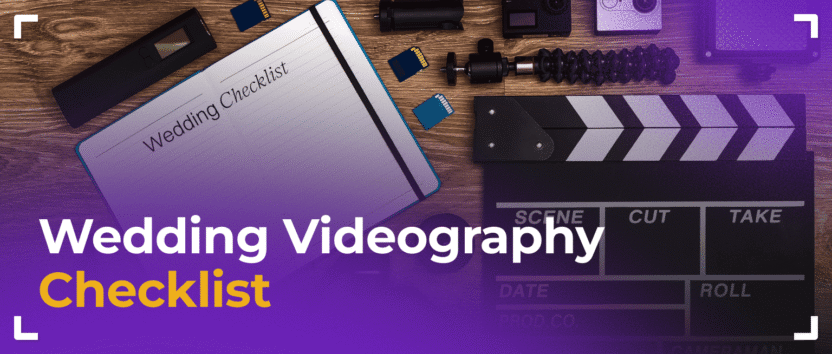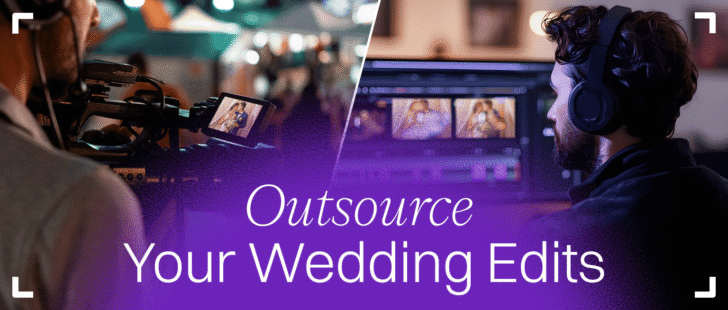TL;DR:
An editing checklist is the main foundation for keeping a wedding film project organized and consistent. It stores all important information in one place, including footage links, camera data, creative notes, and delivery requirements. With a proper checklist, editors can work faster, avoid mistakes, and deliver high-quality videos on time.
Introduction
Wedding films have changed a lot in recent years. They used to be long recordings that covered everything from start to finish. Now, they have become creative highlight reels, teasers, and short films that show the most emotional and meaningful parts of the day. A good wedding video is not only a mix of nice clips with music. It tells the story of two people and captures how their day truly felt.
As editing has become more creative, it has also become more complex. Editors must manage client notes, music suggestions, and several folders of footage. To stay organized, one simple tool makes a big difference: the editing checklist.
At Bride&Groom.video, the checklist is a key part of how we work. It helps us keep track of every detail from the first upload to the final delivery. It also ensures that every film we edit is consistent, efficient, and faithful to the couple’s story.
What Makes a Good Editing Checklist
A good editing checklist is more than a group of tasks. It gives structure to the whole project. Each section covers an important part of the workflow and helps editors stay focused from beginning to end.
It includes:
- basic project information
- footage details,
- creative references,
- technical settings
- and delivery requirements
All of these together form a clear plan.
Key Sections of the Checklist
This plan reduces mistakes, improves communication, and ensures the same level of quality for every film.
1. Couple’s Names & Wedding Date ✔
These are the main details that identify the project. They connect all folders, files, and deadlines to a specific wedding. Without them, it becomes hard to keep an organized system or meet delivery dates.
2. Video Formats ✔
This section lists all the final videos that need to be delivered, such as the teaser, highlight film, documentary edit, ceremony, speeches, or any other version.
Each format has its own structure, length, and musical tone. Knowing these from the start helps estimate workload and assign the right editor.
3. Link to Your Footage ✔
This link is where all media files are stored, whether in Google Drive, Dropbox, or another platform. This is the single source of truth for all media assets. Accurate file links mean no delays, no missing footage, and a faster editing start.
4. Footage Size (GB) ✔
The total file size helps estimate upload and download times, proxy creation, and storage needs. It also helps confirm that all clips are uploaded correctly. When the file size on the checklist matches the size in cloud storage, the material is ready for editing.
5. Project Details ✔
This part includes creative notes from the client. It can describe pacing, editing style, event order, or specific requests. When these details are clear before editing begins, there are fewer revisions later.
6. Music ✔
Here, the client can write what type of music they prefer or list the exact songs they want. The choice of music affects the tone and rhythm of the film, so it helps to decide this before editing starts.
7. Add-ons ✔
Some weddings include extra elements such as multiple days, traditional ceremonies, or speeches in different languages. These details affect syncing, editing time, and how the story is built, so they must be included in the checklist.
8. Cameras ✔
Include information on how many cameras were used and their models. Knowing this helps synchronize footage correctly and apply appropriate color settings based on each camera’s sensor and shooting profile.
9. Editing Settings ✔
Here we specify the editing software (Premiere Pro, DaVinci Resolve, Final Cut Pro), software version, and any special settings such as LUTs, color references, or noise reduction. This helps keep all projects consistent, especially when more than one editor is involved.
10. Export Settings ✔
Outline how the final video will be exported. Include details such as frame rate, bitrate, resolution, and aspect ratio. The correct settings depend on where the video will be shown, such as online platforms, television, or social media.
11. Turnaround Time ✔
Describe the expected delivery schedule. Mention the first draft deadline, any rush delivery options, and the number of revision rounds included. Having this in writing helps both the editor and the client stay on the same schedule.
Conclusion
The editing checklist is much more than an internal document.It is a system that keeps everything organized and clear. It helps avoid confusion, improves teamwork, and ensures that every wedding film meets the same standard of quality.
When all details are confirmed at the start, editing becomes smoother, communication is easier, and the final film always matches the couple’s vision.



